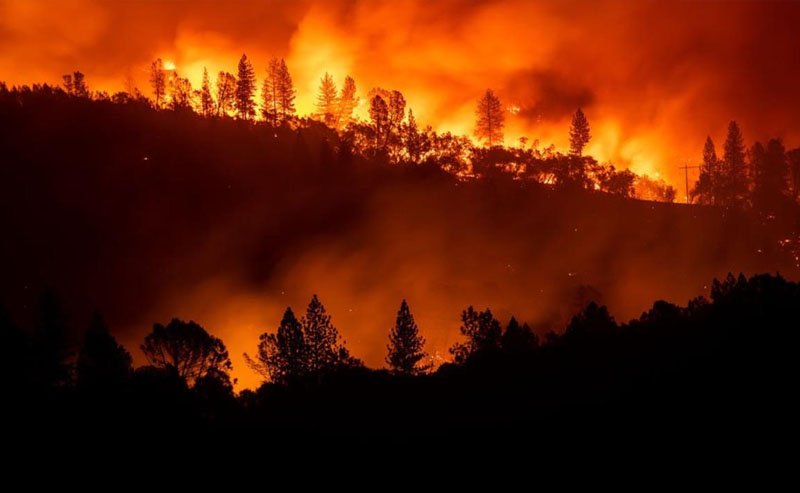— by Ed Wolff, MS, CEM, MEP —
Over the past week, the nation has watched and grieved over the horrific fires in California. The Camp Fire, reported to be the deadliest and most destructive in the state, has taken at least 63 lives, with 130 still reported missing. It has burned almost 10,000 homes and forced the evacuation of at least 52,000 people. The Woosley fire has claimed at least three lives, destroyed 435 homes (with 57,000 more in danger) and consumed 98,362 acres.
Closer to my own home, November 23 is the second-year anniversary of the Gatlinburg, TN fire, the worst fires on the east coast since 1947. This fire caused 14 fatalities, 147 injuries, destroyed 2,400 buildings and scorched approximately 18,000 acres.
The current wildfire destruction in California and the upcoming Gatlinburg fire anniversary have turned my thinking toward fire mitigation.
It’s challenging to plan for every impact or outcome from acts of nature (or sometimes, acts of men). However, there are some things that may be brought to the table to help minimize impacts in some areas.
One of these is the Firewise USA® program. In 2002, The National Fire Protection Association (NFPA) recognized the impacts of the Wildland Urban Interface (WUI) and the urban sprawl that creeps into the woodland regions across the US. They developed the Firewise USA® program to assist residents and communities in reducing the risk of wildfires. Though the program may not prevent a fire from starting, it does provide options to help residents and communities better protect their homes and structures.
According to the NFPA, the program is designed to “empower and engage residents living in wildfire prone areas with a plan and actions that can increase their home’s chances of surviving a wildfire, while also making it safer for firefighters.”
Steps for communities to participate in the program include:
Wildfire Risk Assessment. Communities obtain a written risk assessment form from the state’s forestry agent or local fire department. The community’s board will lead an effort to assess its fire risk.
Form a Board/Committee. A local board/committee is created, which is comprised of residents and other wildfire stakeholders.
Create an Action Plan. The board develops a prioritized list of projects/investments, actions and educational goals for the community.
Educational Outreach. Each participating community is required to have one wildfire risk reduction educational activity annually.
Wildfire Risk Reduction Investment. The community is required to invest time and/or dollar resources in mitigating fire risks.
Application and Certification. The community may apply for its certification at any time in the process. Once all activities are complete, the community will be granted a Firewise USA® program certification.
As emergency management professionals, the Firewise USA® program is another tool in our toolbox to reduce the risks and impacts of wildfires.
As we approach the Thanksgiving holiday week, our thoughts and prayers go out to those that have lost family, friends, property, and belongings. Our never-ending gratitude and thanks go out to all the fire service, law enforcement, EMS, EM, US&R, National Guard, and other public safety personnel, along with the countless volunteers and neighbors who are helping neighbors.

Ed Wolff, MS, CEM, MEP
Vice President, Special Projects
BOLDplanning
Ed Wolff is Vice President, Special Projects for BOLDplanning, a leading provider of preparedness consulting services and online planning software.
Over the past 36 years in emergency management roles, Ed has worked many real-world boots on the ground incidents, including an earthquake and tsunami in Papua New Guinea, mud slides in South America, the World Trade Center in 2001, the Space Shuttle Columbia crash, Hurricane Katrina, and other hurricanes, tornadoes, mud slides, and flooding across five continents.






